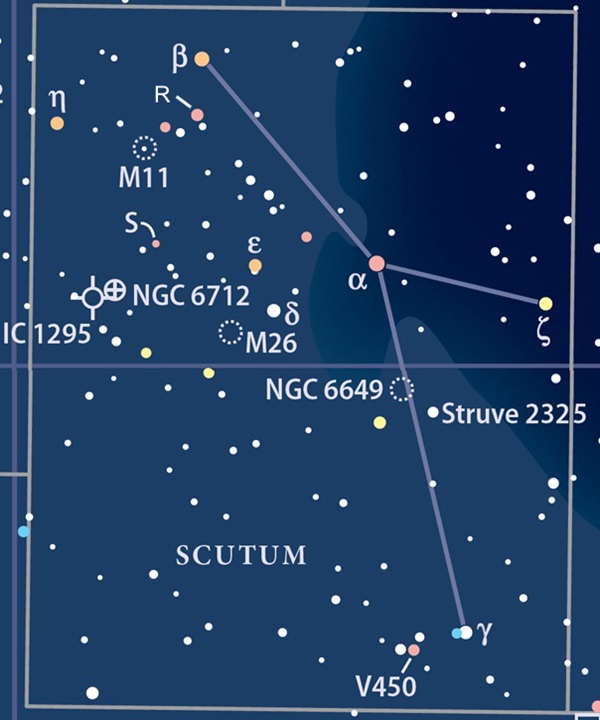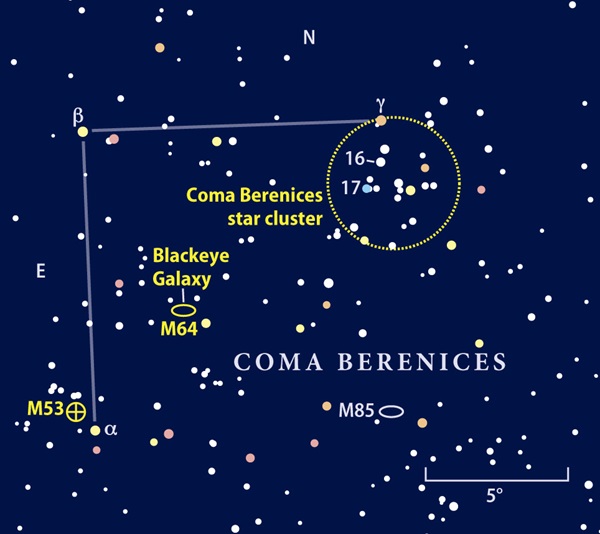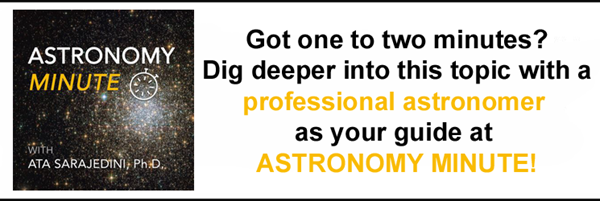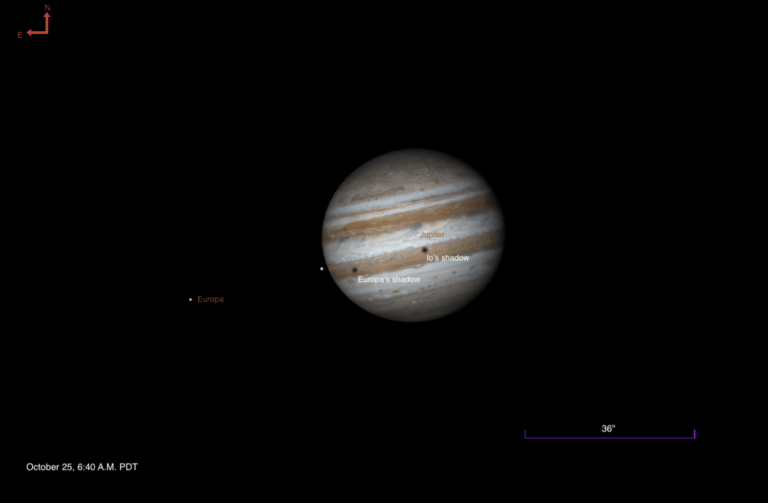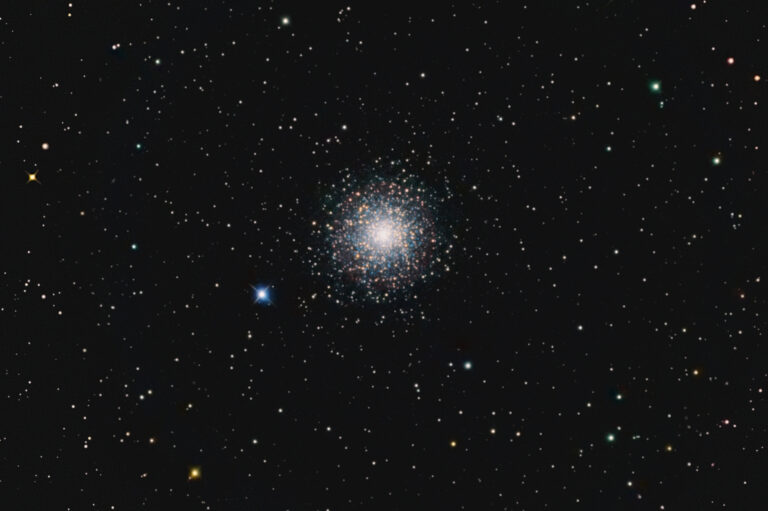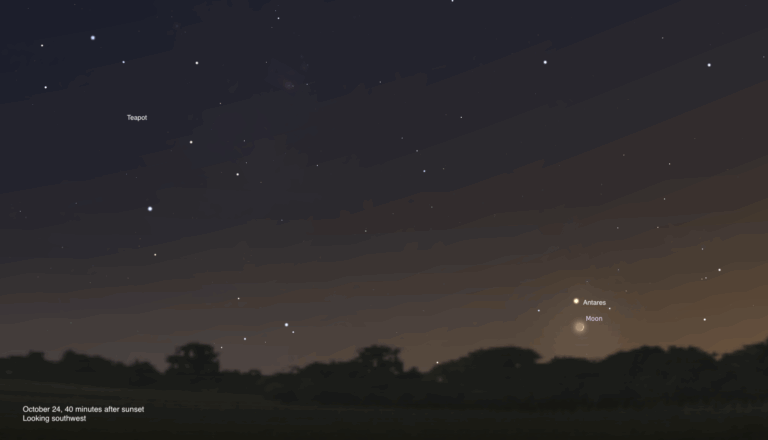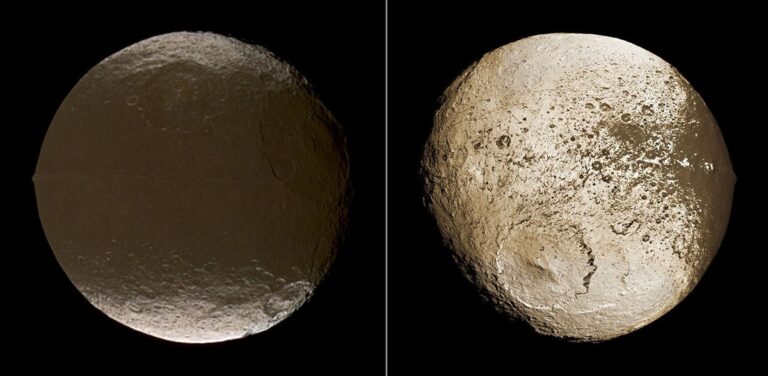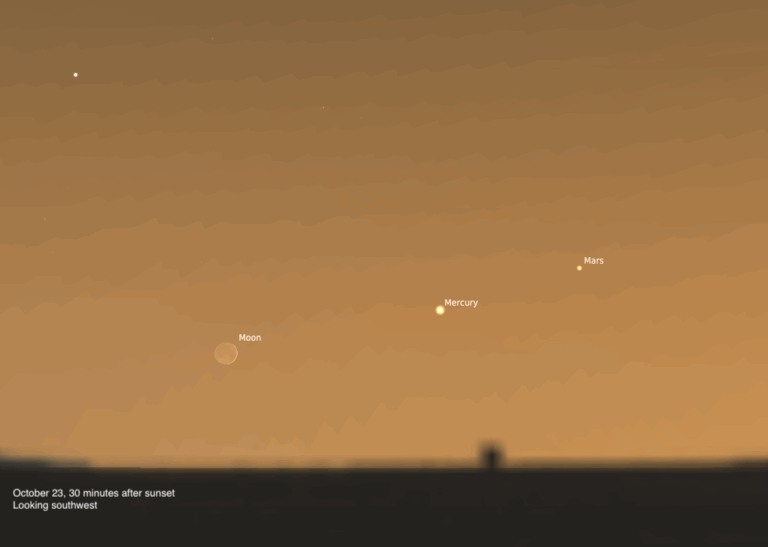Key Takeaways:
Friday, July 2
July’s early evening skies are given over to a race between Earth’s two closest neighbors: Venus and Mars. The Red Planet starts out ahead, but after a close conjunction about midmonth (stay tuned for more information on that event when it occurs July 13th), Venus will pull into the lead.
Tonight, magnitude 1.8 Mars sits 6° east of Venus, in a sparse region of Cancer the Crab. Venus, blazing brightly at magnitude –3.9, is passing through a more interesting landscape: It’s skipping through the northern reaches of the famous Beehive Cluster (M44), also called Praesepe or the Manger. They’ll set around 10 P.M. local time, and the best way to see them is to turn binoculars or a small telescope on the scene shortly after sunset (once you’re sure the Sun is below the horizon, for safety!). Locations with some elevation and a clear, dark western horizon are best.
Sunrise: 5:36 A.M.
Sunset: 8:32 P.M.
Moonrise: 1:14 A.M.
Moonset: 1:55 P.M.
Moon Phase: Waning crescent (42%)
*Times for sunrise, sunset, moonrise, and moonset are given in local time from 40° N 90° W. The Moon’s illumination is given at 12 P.M. local time from the same location.
Saturday, July 3
July’s AAVSO featured variable is R Scuti, a variable star in Scutum the Shield. This small constellation sits in a region of sky bordered by Aquila to the northeast, Serpens Cauda to the north and west, and Sagittarius to the south.
One of the first variables ever discovered, you’ll find R Scuti, which averages a magnitude of 5.2, about 1° south-southeast of magnitude 4.2 Beta (β) Scuti. The variable star, which is an RV Tauri-type star, experiences alternating shallow and deep minima with a period of 71 and 144 days, respectively. As it varies, it can shine as brightly as magnitude 4.5 and as faintly as magnitude 8.2. Astronomers aren’t quite sure what drives this alternating variation, but suspect it may occur as shock waves inside the star propagate outward and interact with gas and dust that the star has shed, which form a cocoon of material around it.
Once you’ve found R Scuti, you can locate another favorite target nearby: The Wild Duck Cluster (M11) sits about 1° (or two Full Moon widths) to R Scuti’s southeast. This easy-to-observe open cluster is richly populated with stars; its brightest members form a rough V shape reminiscent of migrating ducks, which is how the cluster earned its nickname.
Sunrise: 5:36 A.M.
Sunset: 8:32 P.M.
Moonrise: 1:37 A.M.
Moonset: 2:54 P.M.
Moon Phase: Waning crescent (33%)
Sunday, July 4
Saturn slides past the magnitude 14 galaxy IC 1339 this morning. You’ll want to catch them shortly after midnight, when the pair is high above the southern horizon. A medium-sized telescope will net you the best views, although snapping a photo will be hard. Brighter Saturn (magnitude 0.3) will saturate short exposures, which won’t catch the dimmer galaxy at all. Instead, just enjoy visually observing the event. You may also notice Saturn’s moon Iapetus at its greatest western elongation, sitting 9′ due west of Saturn at around magnitude 10.
The Moon passes 2° south of Uranus at 11 A.M. EDT. About two hours before sunrise, our satellite sits 4.5° southwest of the dim planet, whose magnitude 5.8 glow should be easy to see in binoculars. If you’re having trouble spotting it, you can use Omicron (ο) Arietis, whose magnitude (5.8) currently matches the planet’s. Uranus sits 16′ northeast of this star.
Mercury reaches greatest western elongation (22°) at 4 P.M. EDT. If you’re already up early to enjoy the Moon and Uranus, you can also find this small planet in the morning sky. Mercury rises about 80 minutes before sunrise and is a relatively dim magnitude 0.5. To improve your chances of finding it, use brighter Aldebaran, the eye of the Bull, as a signpost: This star rises 30 minutes earlier and sits 11.5° due west of the planet.
Sunrise: 5:37 A.M.
Sunset: 8:32 P.M.
Moonrise: 2:00 A.M.
Moonset: 3:54 P.M.
Moon Phase: Waning crescent (24%)
Monday, July 5
The Moon reaches apogee, the farthest point in its orbit around our planet, at 10:47 A.M. EDT. At that time, it will sit 251,867 miles (405,341 kilometers) from Earth. Rising early in the morning, you can spot the thin crescent in the southeastern portion of Aries the Ram, nearly level above the horizon with the Pleiades (M45) open star cluster in nearby Taurus.
About 23.5° directly above the Moon is the constellation Triangulum. Although it’s one of the sky’s smallest constellations, it still holds several great targets, including M33: The Pinwheel Galaxy. This faint, oval-shaped object is visible to sharp-eyed observers without optical aid, but is really best viewed with binoculars or a smaller scope at low power (e.g., a 4-inch telescope with 30x magnification). You’ll find M33 about 4.3° west-northwest of Triangulum’s magnitude 3.4 alpha star, Mothallah.
The Moon isn’t the only object reaching a far point in its orbit today. Earth also reaches aphelion, the farthest point in its orbit around the Sun, at 6 P.M. EDT. Then, our planet will be 94.5 million miles (152 million km) from our star.
Sunrise: 5:38 A.M.
Sunset: 8:32 P.M.
Moonrise: 2:26 A.M.
Moonset: 4:54 P.M.
Moon Phase: Waning crescent (17%)
Tuesday, July 6
Early risers can find a popular naked-eye asterism in the southeast this morning: the Circlet of Pisces. This grouping of seven stars is located in the western portion of Pisces the Fish, directly south of another asterism: the Square of Pegasus. Pisces’ Circlet comprises Gamma (γ), 7, Theta (θ), Iota (ι), 19, Lambda (λ), and Kappa (κ) Piscium. Of these, magnitude 3.7 Gamma is the brightest, so don’t expect the Circlet to be particularly striking! Still, it’s an easy, relatively large naked-eye pattern to find, with a diameter of roughly 6° (meaning you could fit 12 Full Moons, each 0.5° across, inside it).
If you’re looking for a more challenging target this morning, consider the galaxy NGC 7679, which sits roughly in the middle of the Circlet and glows at magnitude 12.5. It’s best seen with a telescope. You’ll find NGC 7679 about halfway along a line drawn between Theta and Kappa Piscium. This starburst galaxy is undergoing a period of intense star-forming activity; it’s also considered a Seyfert galaxy, meaning its central supermassive black hole is actively feeding and sports a brightly glowing accretion disk.
Sunrise: 5:38 A.M.
Sunset: 8:31 P.M.
Moonrise: 2:56 A.M.
Moonset: 5:54 P.M.
Moon Phase: Waning crescent (10%)
Wednesday, July 7
High overhead by sunset is Boötes the Herdsman. With no bright moonlight to wash out the stars tonight, it’s time to test your (averted) vision with the “pop-up” companion of Izar (Epsilon [ϵ] Boötis).
Epsilon is a magnitude 2.4 star located about 10.3° north-northeast of bright Arcturus, the constellation’s alpha star. Once you’ve found Izar, look slightly away from it, keeping it in the corner of your vision (this is called averted vision). Do you notice a dimmer companion popping into view? This is W Boötis, also called 34 Boötis, which can be better seen with a small telescope. Through your scope, compare and contrast the two stars’ colors — brighter, larger Izar appears yellow to most, while W Boötis looks almost green by contrast (to some). W’s magnitude changes over time because the star is variable, with a period that ranges from 25 to 33 days as it swings between magnitude 4.7 and 5.4.
Sunrise: 5:39 A.M.
Sunset: 8:31 P.M.
Moonrise: 3:31 A.M.
Moonset: 6:53 P.M.
Moon Phase: Waning crescent (5%)
Thursday, July 8
The Moon passes 4° north of Mercury at 1 A.M. EDT, but you won’t be able to spot the pair until they rise about 85 minutes before sunrise. Now magnitude 0.1, Mercury should be a bit easier to spot, while the thin crescent Moon will present more of a challenge. Both lie level with each other above the horizon as they rise in Taurus, and they stand about 3.5° high an hour before sunrise.
Zeta (ζ) Tauri, one of the two tips of the Bull’s horns, sits just 0.5° above Mercury. Can you separate them easily by eye? Through binoculars or a telescope, you’ll see Mercury is just 46 percent lit and spans about 7″ in apparent diameter. Nearly 8° to Zeta’s upper right is Elnath, the other horn. This star shares the designations of Beta Tauri and Gamma Aurigae, as it sits on the boundary between Taurus and Auriga.
Sunrise: 5:39 A.M.
Sunset: 8:31 P.M.
Moonrise: 4:12 A.M.
Moonset: 7:50 P.M.
Moon Phase: Waning crescent (2%)
Friday, July 9
New Moon occurs at 9:17 A.M. EDT. No Moon — or moonlight — means it’s a great time to enjoy some of the sky’s fainter gems.
Slowly tailing Leo the Lion toward the horizon in the west this evening is Coma Berenices. Within this smaller constellation is the stunning star cluster Melotte 111, often simply called the Coma Berenices star cluster. To find it, look in the relatively empty portion of the sky that falls between Boötes (to the east), Leo (to the west), and the arc of the Big Dipper’s handle (to the north). The cluster sits in this region, about 2.3° south-southwest of magnitude 4 Gamma Comae Berenices. If your skies are clear and your surroundings dark, you’ll likely spot the cluster with no aid at all, appearing as a small, fuzzy patch of light. Zooming in with binoculars will net you numerous stars.
Coma Berenices is home to two other appealing deep-sky objects: the Blackeye Galaxy (M64) and globular cluster M53. Both can also be seen with binoculars or studied in more detail with a telescope. To locate the Blackeye Galaxy, scan about 5.2° northwest of Alpha (α) Comae Berenices until you come across the galaxy’s oval-shaped magnitude 8 glow. Bump up your magnification, and you might spot the dark dust lane blocking a portion of the galaxy’s light — the “black eye” for which it was named.
Much closer to Alpha (about 1° northeast of the star) is M53, a globular cluster whose magnitude 7.6 glow is easiest to find in 60mm (or larger) binoculars.
Sunrise: 5:40 A.M.
Sunset: 8:30 P.M.
Moonrise: 5:01 A.M.
Moonset: 8:41 P.M.
Moon Phase: New


